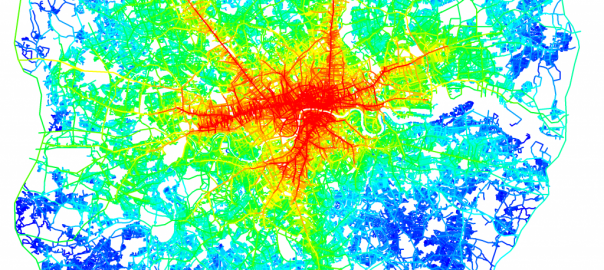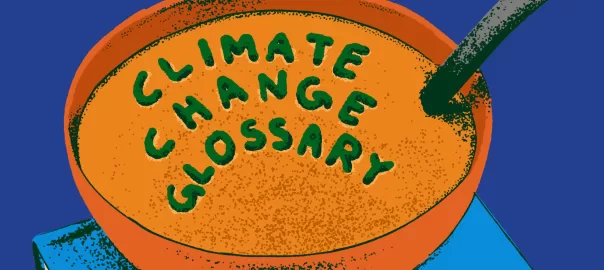This essay collection communicates that it will take our collective vision and action to move toward an equitable future for Richmond. It will require both grassroots and advocacy organizations to influence political action. To do this, we need a comprehensive, multi-sector, intergenerational, intersectional approach to our anti-racist work, which links people, communities, and strategies across policy arenas.
The inspiration to create this essay collection came from numerous places. As urban planners practicing as a diversity, equity and inclusion consultant and a professor, we often sit in rooms with Richmonders from various sectors who are constantly talking about equity — what it is and how we get there. These conversations too often happen in silos. We wanted Richmond to have a broader and deeper cross-sector conversation about what equity, especially racial equity means for our city, in practice and from practitioners who could offer concrete strategies and solutions. Secondly, The Richmond Racial Equity Essays was inspired by and modeled after The Just City Essays: 26 Visions of Equity, Inclusion and Opportunity, an e-book of 26 Essays edited by Toni L. Griffin, Ariella Cohen and David Maddox and published by J. Max Bond Center on Design for the Just City at the City College of New York, The Nature of Cities and Next City.
The Richmond Racial Equity Essays is a project with a wide scope, from essays and videos to interviews and podcasts.
This is, however, just a starting point for bringing together a broad array of thinkers and practitioners that are working toward social change. Hopefully this project is a catalyst for engaging other voices and perspectives that might not be represented here; to inspire others to discuss, assess and champion racial equity in their own communities and organizations. But ultimately, we hope this collection provides a framework for advancing racial equity in Richmond that leads to sustained action and the transformation of our beloved city.
Growing up, I was considered “disadvantaged”, because I lived in a single parent household where we struggled to make ends meet and was enrolled in a low performing school district. In order to flip my “disadvantaged” status on its head, I strove to become the epitome of success by graduating at the top of my class and going off to Georgetown University. Now, as a successful Black entrepreneur who “beat the odds,” I am considered an exception. I, however, am not satisfied with being an anomaly. Even under the worst oppression, there were some Black people that were successful. What would be exceptional is if Black and Brown prosperity were the norm. What if we had a system that encouraged Black and Brown prosperity? What if we had a system that valued and invested in it, and removed the greatest barriers to it: systemic racism and economic inequality — both of which feed into each other. What if we had neighborhoods and communities that displayed, supported and celebrated Black and Brown prosperity rooted in property and business ownership and a robust cultural identity?
I went into urban planning because I wanted to create these types of communities, where Black and Brown prosperity was written into the landscape. I wanted to see more Black and Brown communities with renovated buildings, grocery stores with healthy food, quality housing and successful businesses and commercial buildings owned by the people who lived in the neighborhood. Neighborhoods where Black and Brown presence and culture are celebrated, not seen as signs of degradation. This is still my hope; to help create a racially equitable Richmond that is absent of stark visible differences in streets and streetscapes, parks, housing, services, schools and business districts between the mostly Black and Brown communities in Richmond’s East End, Northside and Southside – and those in the West End — wealthier and white.
To do this, we must intentionally acknowledge and address the racial inequities that have become the norm in our community. Data outlined in Richmond 300 (The City’s Master Plan) Insights Report and RVA Green 2050 (The City’s Climate Resilience Planning Process) Equity Index show the wealth, health, school performance, housing and homeownership and environmental disparities are racial, economic and geographic — the neighborhoods that are not thriving are Black and Brown and in certain sections of the city. I would bet there has also been disparities in city capital improvement spending in Richmond, otherwise sidewalks and street repairs and streetscape improvements would be more equitably distributed.
We have to be diligent and vigilant in unmasking and disrupting white supremacy and the ways it has shaped our urban environment. We know the history of redlining, highway construction through Jackson Ward, concentrating public housing and how Black and Brown communities were targeted for subprime lending and experienced the greatest impact on wealth, foreclosures and homeownership from the Great Recession. Black wealth is at an all-time low; we have lost 3,600 Black homeowners in Richmond and our city is gentrifying. We are far from “ONE” Richmond. We are, like most places, a tale of two cities, one prospering and white, the other mostly struggling and Black and Brown. I am not sure what we need is unity. We need to be comfortable with difference, celebrate diversity, make sure those that are marginalized are at the table and have power and work to upend disparities that have been for too long been associated with our differences. My equitable Richmond includes thriving Black and Brown communities centered on and celebrating cultural identity and ownership in intentional neighborhood centric ways. Creating neighborhoods and communities rooted in Black and Brown cultural identity while supporting ownership and entrepreneurship will be keys to advancing racial equity in our city.
From Ideas to Action
This project would not have been possible without the willingness of all 27 of the essayists to offer their personal experience, professional expertise and transformative ideas to create a dynamic vision and concrete strategies to advance racial equity in Richmond. To all of the essayists, thank you for your contribution to thought leadership in our region. These essays have much to teach us about the racial inequities that plague our lives and our city, but also about how we might dismantle racism and reimagine a new future.
Racial equity is both an outcome and a process. As an outcome, racial equity is realized when race no longer determines one’s ability to thrive and be successful. As a process, racial equity is the practice of meaningfully involving marginalized people in the decisions that impact their lives. The overarching themes gleaned from this collection and categorized below can help inform our actions and processes and influence outcomes towards a more racially equitable future. I hope readers reflect on these themes and strategies, perfect them, and put them into action.
Personal Transformation
Advancing racial equity requires a change in personal perspective, and we see that theme throughout many of the essays. Michael reminds us of the important values, such as respect for elders and love of our neighbor that should be the basis for our community engagement and decision making. Lea, Bekah, Damon and Meghan, encourage us to shift the way we relate to those who are most impacted by inequities, recognizing their value, expertise and creating space for those who are most marginalized to step into power. Oscar lets us know that we need to intentionally create space for relational and cultural connection across differences. Angela prompts us to change how we view Black girls, to value their lives and contributions, and to invest in their futures. Dennis invokes white people to work with other white people to address the white backlash that undermines racial equity. Ram gives us Massive Resilience as a tool to heal Black people and communities through arts, culture, education and health. Ashley prompts us to rethink our approach to mass incarceration for violent offences and tells us to move our anti-racist work from our brain to our body to begin to heal our racial trauma.
Institutional Change
The essays make clear that whether business, non-profit or government organizations, changing the policies and practices that create barriers to prosperity for people of color is a must. Lea and Bekah encourage the non-profit sector to change the way they engage communities of color by centering their experience and expertise. They challenge us to fundraise differently and fund Black led non-profits sufficiently. Brian encourages the business community to adopt more equitable practices and remove barriers to Black and brown entrepreneurs. Shantenymakes it clear that greater representation, cultural appreciation and power distribution for Latinos needs to take place, while Gabriella advocates for empathy, empowerment and linguistically and culturally accessible services for the Latino community.
Reallocating Resources
Creating a more just and equitable world will require intentional reallocation of resources and investment into the lives and communities that have been deprived. Ebony believes investing in Black and brown communities that promote property ownership and entrepreneurship is key. Shekinah gives us Brown Circles as a framework for Black collective financial liberation while Taikein, Genevieve, and Ben point us towards transforming the way we approach and fund education. Maritza advocates investing in public infrastructure that reconnects our city and establishing programs that increase generational wealth. Ryan, Jeremy, Danny, Wyatt and Faith clearly communicate that we need to target our health, climate, greenspace and transportation resources and interventions where they are needed most (using data) and to the historically marginalized first.
Changing Policy
History has taught us that policy plays a significant role in creating and perpetuating systemic racism. Heather and Mariah remind us that it was housing policy that helped segregate our communities. Thus, we need to enact new policies and allocate new resources to make sure we have affordable rental and homeownership options available in every neighborhood, such as inclusionary zoning and property tax relief. Likewise, Martiza proposes rewriting the zoning ordinance as a way to facilitate more housing options. We also need policies that provide greater access and alternatives to our existing systems. Tanya exhorts local governments in the region to adopt a comprehensive immigration integration policy that centers language access services. Ashley points us to models like Common Justice than enable alternatives to incarceration.
Multi-Sector Collective Action
Finally, the essays communicate that it will take our collective vision and action to move toward an equitable future for our city. Actions include building awareness of various issues, catalyzing strategies like those presented in this collection, and supporting the work of both grassroots and advocacy organizations to influence political action. To do this, we need a comprehensive, multi-sector, intergenerational, intersectional approach to our anti-racist work, which links people, communities, and strategies across policy arenas.
The work ahead of us is hard, but the time is now. We hope these ideas create conversations and collaborations that lead to innovation and change for Richmond, and perhaps create new models for advancing racial equity in our nation.
Ebony Walden
Richmond, Virginia
The Richmond Racial Equity Essays is a project with a wide scope, from essays and videos to interviews and podcasts. See it here.







Leave a Reply